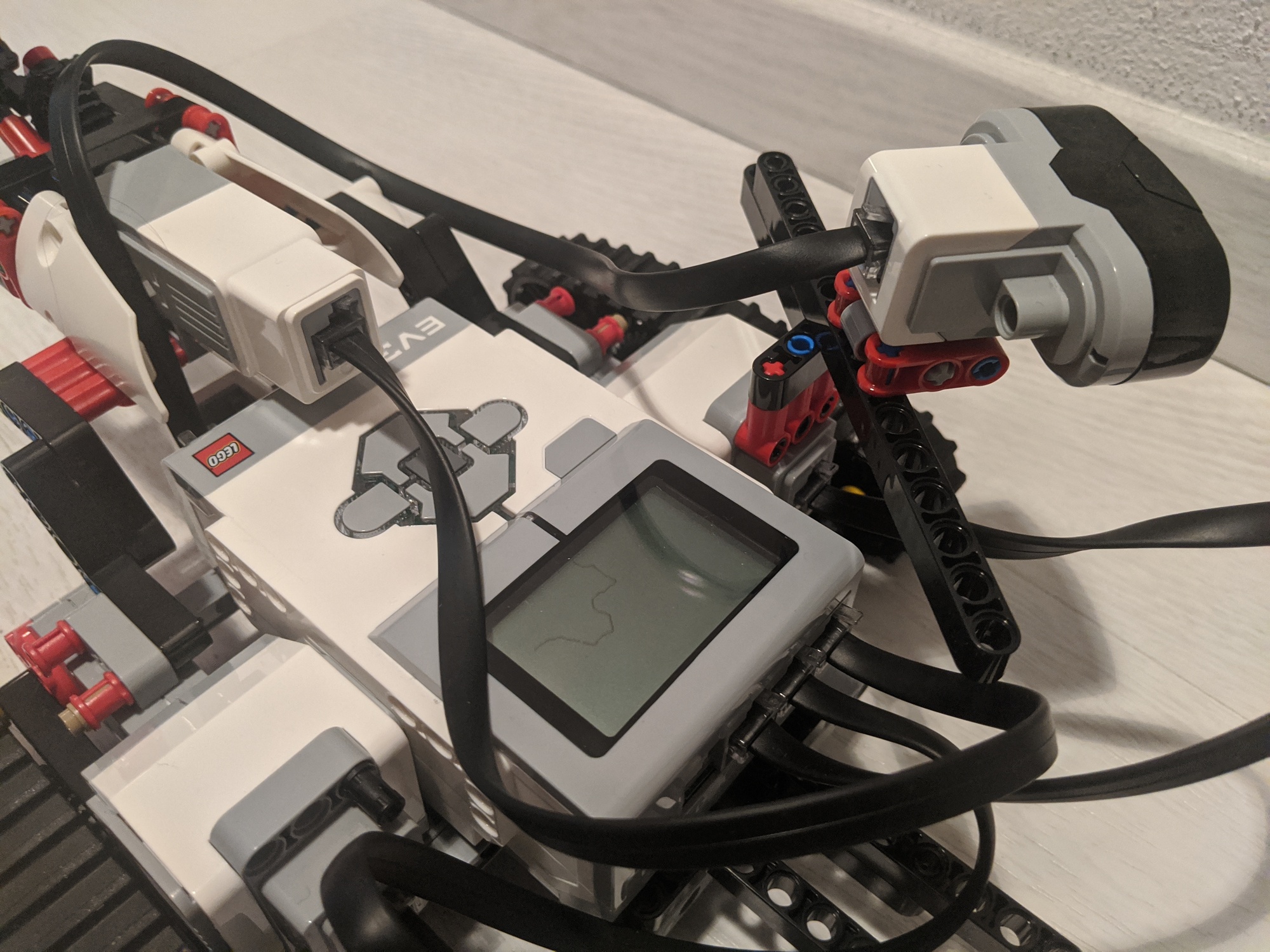Managed by an eleven year old
This weekend I had some pretty good uncle time. My eleven year old nephew (after beating me in a fair match of tennis) wanted to play with his Lego Mindstorms set. He never even touches it unless I am around to help him, but then he quiet enjoys. As expected, when I ask him what we should try to build, he tends to come up with completely unrealistic or impossible ideas, and we have to somehow reduce the scope to something doable.
This time round, inspired by their autonomous vacuum cleaner, he wanted to build something like that. That was convenient, because now I could sell him what I wanted to try to do, namely make the robot follow a wall at more or less constant distance, as a useful first step.
We mounted the infra red distance sensor at an 45° angle to the front-left, and then I built a very simple control loop – measure the distance, subtract 40, apply a factor, and feed that into the “steering” input of the drive action, and repeat. I must admit that I was pretty proud to see just how well that very simple circuit worked: The little robot turned sharp corners in both directions, and otherwise drove nicely parallel and with constant distance to the wall.
I was satisfied with that achievement and would have happily ended it here before we might be disappointed by more ambitious and then failing goals.
But my nephew had not forgotten about the vacuum cleaner, and casually asked if I could make the robot draw an outline of its path, and thus of the room, on the display. Ok, where do I begin to explain just how unfeasible that is … yes, it seemed one can draw to the display. But how should the robot know where it is? How far it turns? How far it went? This is programming by connecting boxes, and I would not expect such an interface to allow for complex logic (right?). And I would need trigonometry and stuff.
But he didn’t quite believe it, and thus got me thinking … indeed, the arithmetic block can evaluate more complex formulas, involving sin and cos … so maybe if I can somehow keep track of where the robot is heading … well, let’s give it a try.
So by dragging boxes and connecting wires, I implemented a simple logic (three variables, x and y for current position, alpha for current heading; in each loop add the “steering” input onto alpha, and add (sin (alpha), cos (alpha)) onto the current position; throw in some linear factors to calibrate; draw pixel at (x, y)). And, to my nephew’s joy and my astonishment, the robot was drawing a curvy line that clearly correlates with the taken path!
It wasn’t respecting the angles perfectly, a square might not properly close, but half an hour earlier I would have actively bet against that we would pull this off!

I was, I must admit, a bit proud. But not only about the technical nerding, but also about my uncleing: That night, according to his parents, my nephew said that he can’t remember ever being so happy!
Comments
Have something to say? You can post a comment by sending an e-Mail to me at <mail@joachim-breitner.de>, and I will include it here.
Got reminded of this quote from Robert Heinlein: Always listen to experts. They’ll tell you what can’t be done, and why. Then do it.
Apparently, your inner uncle trumps your inner expert. Way to go!